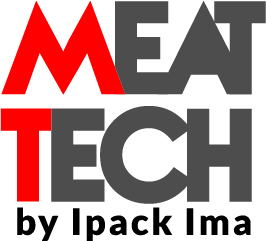THIS INTERNATIONAL ON DEMAND SUMMIT IS AN INDUSTRY… More
Latest Available Data: USA
According to the latest report from the Manufacturers' Alliance for Productivity and Innovation (MAPI), there will be a significant acceleration in the growth experienced by the U.S. manufacturing sector in 2016.
Last June, MAPI released an update of its quarterly economic forecast, where it shows that real U.S. GDP is expected to expand by 2.5 percent in 2015 and 4.0 percent in 2016.
"A number of factors that drove growth last year have changed in 2015," said MAPI chief economist Daniel J. Meckstroth. "A sudden, rapid decline in oil and natural gas prices was good for energy users, but caused problems for energy drilling, exploration, and the material supply chain; a sudden, rapid rise in the value of the dollar hurt our trade competitiveness; a large inventory buildup last winter pushed the inventory/sales ratio to unwanted highs; and, finally, consumers are cautious and risk-averse, and many of these shocks slowing growth this year will be absorbed and will not hold growth in 2016," he added. "Assuming we have a return to a 'normal winter' this year, production should get a boost."
The MAPI report offers economic forecasts on 23 of the 27 industries covered. MAPI anticipates that 19 sectors will grow in 2015, 3 will decline and one, aluminum, will remain at the same levels as in 2014. The "top performing" sectors, with an expected annual growth of 11 percent, will be engines, turbines and power transmission equipment and industrial machinery.
With a 6 percent increase, Italian exports to the U.S. rose from € 1.3 billion in the first half of 2014 to € 1.4 billion in the same period of 2015. Italy maintains a prominent position among the main supplier countries of machinery and capital technologies, ranking 7th with a market share of 5.4 percent (6.3 percent in 2014), preceded in order by Japan, Germany, China, Canada, Mexico and South Korea and followed by the United Kingdom and France.
In the first 6 months of 2015, total U.S. imports related to Machines Italia's 15 reference sectors increased by 25 percent to €25.7 billion. As for U.S. imports of the main commodity categories of capital goods, there was an increase in all customs items with the exception of textile machinery (-13.4 percent) and packaging and wrapping machinery (-3.1 percent).
Nearly 60 percent of U.S. imports of capital goods are hydraulic, pneumatic and transmission components, agricultural machinery and earthmoving and construction machinery.
In the first six months of 2015, the U.S. registered within the macro-sector of capital equipment machinery, generalized positive growths in purchases from Italy. Only six of Machines Italia's fifteen sectors turned out to be down, that of marble and stone processing machinery (-41.5 percent), agricultural machinery (-15.7 percent), foundry machinery (-12.1 percent), textile machinery (-11.9 percent), printing and papermaking machinery (-11.7 percent) and machine tools (-1.5 percent). Only the textile machinery sector follows the sectoral trends of U.S. imports from the rest of the world.
As for imports from Italy, the sectors showing the largest increase, with double-digit changes in 2015, were: glass processing machinery (+63.2 percent), earthmoving and construction machinery (57.3 percent), woodworking machinery (+30.7 percent), ceramic processing machinery (+24.2 percent), hydraulic, pneumatic and transmission components (+17.8 percent) and packaging and packing machinery (+13.5 percent).
Last June, MAPI released an update of its quarterly economic forecast, where it shows that real U.S. GDP is expected to expand by 2.5 percent in 2015 and 4.0 percent in 2016.
"A number of factors that drove growth last year have changed in 2015," said MAPI chief economist Daniel J. Meckstroth. "A sudden, rapid decline in oil and natural gas prices was good for energy users, but caused problems for energy drilling, exploration, and the material supply chain; a sudden, rapid rise in the value of the dollar hurt our trade competitiveness; a large inventory buildup last winter pushed the inventory/sales ratio to unwanted highs; and, finally, consumers are cautious and risk-averse, and many of these shocks slowing growth this year will be absorbed and will not hold growth in 2016," he added. "Assuming we have a return to a 'normal winter' this year, production should get a boost."
The MAPI report offers economic forecasts on 23 of the 27 industries covered. MAPI anticipates that 19 sectors will grow in 2015, 3 will decline and one, aluminum, will remain at the same levels as in 2014. The "top performing" sectors, with an expected annual growth of 11 percent, will be engines, turbines and power transmission equipment and industrial machinery.
With a 6 percent increase, Italian exports to the U.S. rose from € 1.3 billion in the first half of 2014 to € 1.4 billion in the same period of 2015. Italy maintains a prominent position among the main supplier countries of machinery and capital technologies, ranking 7th with a market share of 5.4 percent (6.3 percent in 2014), preceded in order by Japan, Germany, China, Canada, Mexico and South Korea and followed by the United Kingdom and France.
In the first 6 months of 2015, total U.S. imports related to Machines Italia's 15 reference sectors increased by 25 percent to €25.7 billion. As for U.S. imports of the main commodity categories of capital goods, there was an increase in all customs items with the exception of textile machinery (-13.4 percent) and packaging and wrapping machinery (-3.1 percent).
Nearly 60 percent of U.S. imports of capital goods are hydraulic, pneumatic and transmission components, agricultural machinery and earthmoving and construction machinery.
In the first six months of 2015, the U.S. registered within the macro-sector of capital equipment machinery, generalized positive growths in purchases from Italy. Only six of Machines Italia's fifteen sectors turned out to be down, that of marble and stone processing machinery (-41.5 percent), agricultural machinery (-15.7 percent), foundry machinery (-12.1 percent), textile machinery (-11.9 percent), printing and papermaking machinery (-11.7 percent) and machine tools (-1.5 percent). Only the textile machinery sector follows the sectoral trends of U.S. imports from the rest of the world.
As for imports from Italy, the sectors showing the largest increase, with double-digit changes in 2015, were: glass processing machinery (+63.2 percent), earthmoving and construction machinery (57.3 percent), woodworking machinery (+30.7 percent), ceramic processing machinery (+24.2 percent), hydraulic, pneumatic and transmission components (+17.8 percent) and packaging and packing machinery (+13.5 percent).
Recent News
POSTED ON

























